Ready to take your swimming to the next level? Here is a look at the eight best core exercises for swimmers to improve power and technique, protect themselves from injury, and swim faster.
When it comes to swimming faster, there is no shortage of things to focus on in and out of the water.
From nutrition to mobility, to building explosive strength to improving conditioning in the water, there are about a hundred and a half ways to get faster.
Improving core strength is a fundamental piece of the puzzle for swimmers looking to get faster in the water.
In this round-up of my favorite core exercises for swimmers, we will cover some of the basics and detail some more advanced core exercises for maximum stability and power in the water.
While it won’t automagically turn you into Michael Phelps overnight, implementing some of these core exercises for swimming will help with technique, reducing injuries, and exerting a stronger and more efficient stroke in the pool.
Let’s dive in!
Core Exercises for Swimming
To help swimmers improve their core strength, here are some of the best exercises to incorporate into their training regimen:
- The plank
- Side plank
- Bird dog
- Dead bug
- Unilateral glute bridge
- Pallof press
- Pot stirrers
- Rollouts
Next, we will examine each core exercise in greater detail, including key pointers for getting the most from your core training.
1. The Plank
Planks, from the basic and straightforward version to all of its variations, including weighted variations, are a staple in dryland workouts for swimmers for a few reasons.
For starters, it’s hard to screw up, and if the form is off, it’s easy to diagnose. Second, all the variations give it TONS of ways and progressions to improve core strength. And third, no equipment! Planks can be done anywhere, anytime.
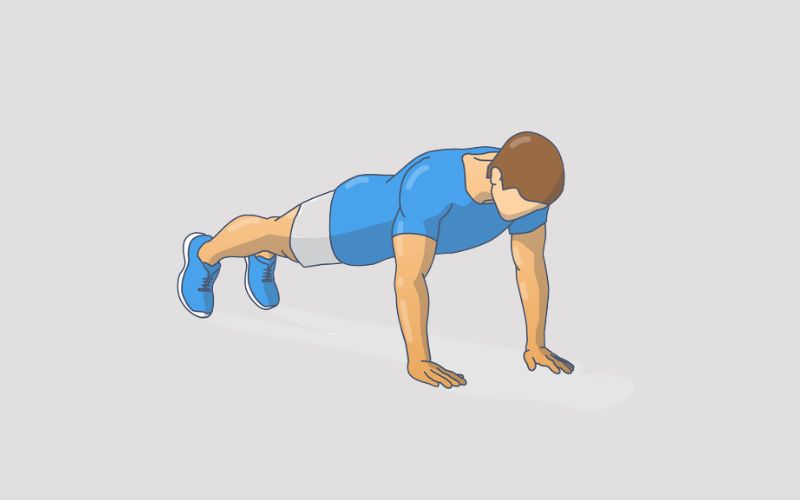
Planks help swimmers improve body control and alignment in the water and are also an excellent way to activate your core before hopping into the water for swim practice.
To do the plank like a boss:
- Keep the back, neck, and head straight. No sagging of the lower back or staring straight ahead
- Suck in the belly button to really “brace” the midsection
- Use a push-up position or place forearms on the floor at shoulder-width
Start by doing plank holds for 20 or 30 seconds for several sets to learn the basics of bracing the core and breathing while the core is firing.
See also: 7 Benefits of Core Training for Swimmers
Planks are an excellent foundational core exercise for swimmers and set the stage (and the core strength) for more challenging core exercises.
2. Side Plank
The side plank, also known as the side bridge, is one of my favorite core exercises for swimmers. It has a lot of applications in helping swimmers increase pelvic control, strengthen the lumbar spine, and hammer the obliques.
Even though it looks fairly straightforward and easy, it’s a powerhouse, excellent for addressing muscle imbalances, strengthening the muscles around the spine, and yes, helping swimmers transfer more power in the water.
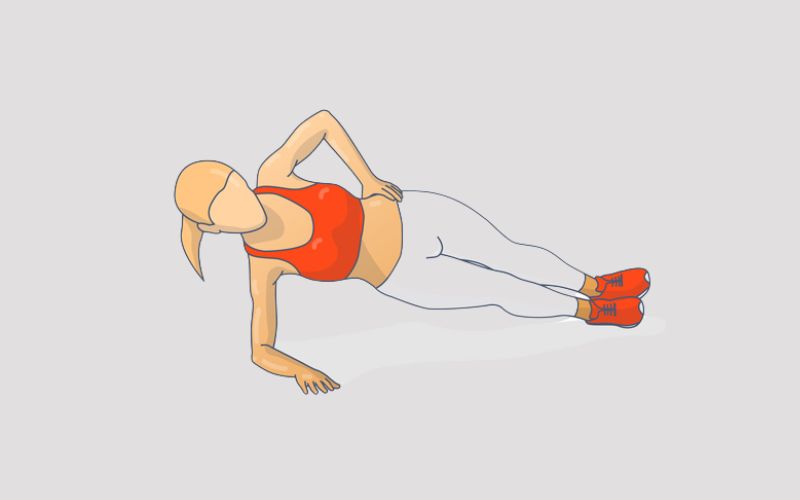
A study published in the Journal of Sport Rehabilitation, titled “Electromyographic Analysis of Hip and Trunk Muscle Activity During Side Bridge Exercises in Subjects With Gluteus Medius Weakness,” showed side bridges to target the abdominal and trunk muscles without the excessive lumbar compression typical of crunches or curls.
See also: 6 Swim Workouts for a Stronger Core
Side planks can also be configured according to the swimmer’s ability. Entry-level side planks can be done on the forearm, while more advanced users can use a Swiss ball for even more stability work.
Tips for doing side planks properly:
- Avoid allowing the hips to sag; aim for a straight spine line from the top of the head to your feet
- Keep the hips straight and keep them from rotating
- Breathe and brace the core by drawing the belly button in towards the spine
3. Bird Dog
The Bird Dog exercise is another excellent exercise for swimmers.
Although it looks easy and like it may not do much, this core exercise is a beast for targeting the core (obviously), glutes, hips and the lower back.
But wait, there’s more…
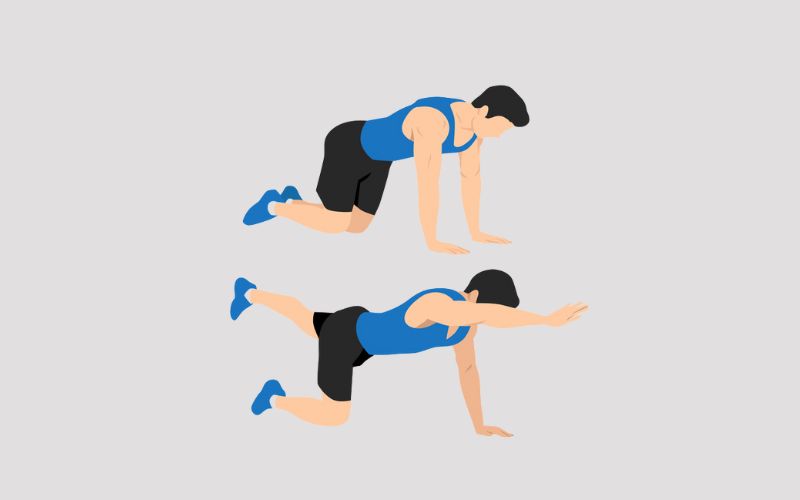
The Bird Dog exercise is more of a full-body exercise that improves overall balance and stability.
As it pertains to improving swim performance, the bird dog also works on that “head down” position you should be aiming to use while swimming up and down the pool.
Tips for doing Bird Dog like a pro:
- Keep your back and neck flat. Avoid the urge to pick your head up. You aren’t swimming into the wall to do a flip turn, after all.
- Focus on the connection from your fingertips to your toes in extension.
- Move through the full range of motion slowly and in full control. No gold medals are given out for rushing through core exercises.
4. Dead bug
Let’s stick with the animal theme with dead bugs!
The dead bug core exercise looks easy, and when done improperly, can be. But when done properly, it’s a killer core exercise for swimmers that checks a lot of the requirements for faster swimming in the pool.
Dead bugs are done while laying on the floor (like a … dead bug), flattening your back, raising your legs to a 90-degree bend, extending the arms, and extending opposing limbs slowly and in a controlled manner.
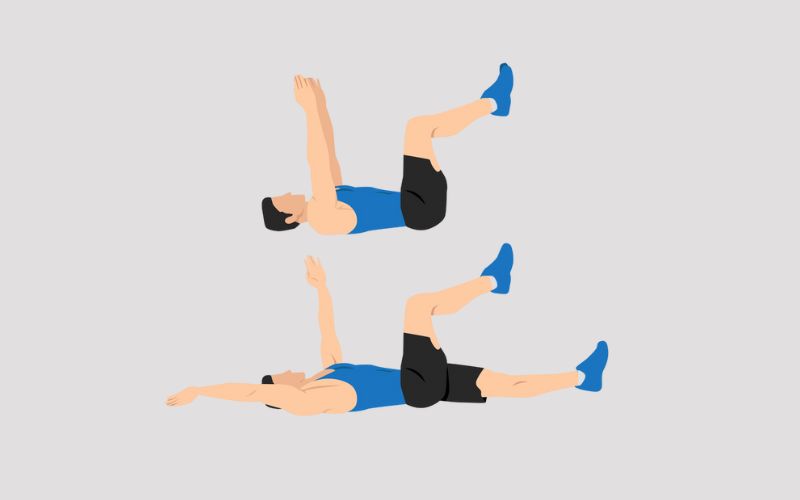
I know!
That’s it.
Doesn’t look too challenging or like it would be an effective core exercise for swimming, but the dead bug has some excellent bugs, err, features:
- Full-body awareness is required to do it properly. Dead bugs require contralateral movement, moving opposing sides of the body in coordination (just like in the water when stroking and kicking).
- Dead bugs are awesome for better posture. The flat lower back encourages a straight spine and forces better body posture. The moment the low back comes off the ground you’ve got the immediate feedback to know that you’ve slid out of neutral position.
Dead bugs can be quickly progressed with a resistance band (for the arms in either a static position or moving through the movement under resistance).
To get the most for your swimming from dead bugs, remember to:
- Breathe from the diaphragm.
- Keep the back of your head on the floor (avoid the urge to look around)
- Move in a controlled manner.
- Keep that lower back flattened.
Unleash a stronger core!
5. Unilateral Glute Bridge
Unilateral glute bridges are part core exercise, part glute and posterior chain exercise.
This core exercise is perfect for swimmers who spend a lot of time sitting over the course of the day as it wakes up “sleepy” glutes and hamstrings from hours of being parked on.
The exercise is done on the floor. Place your arms at your side, feet shoulder width and knees bent approximately 90-degrees. Raise the hips until the hips, knees, and shoulders form a straight line.
Raise one foot and extend it. You’ll feel it in the glutes and hamstrings and the core as your body rushes to stabilize the leg.
The unilateral aspect can be done after a normal supine bridge (i.e. you raise the hips with both legs, pause, and then extend one leg) or begin the movement with one leg extended (as shown in the image below).
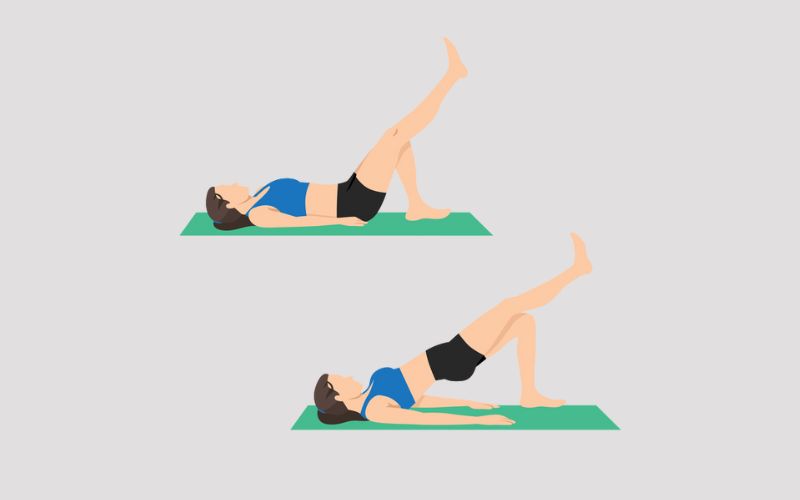
Variations include doing light flutter kicking with the leg in the air, or more advanced users can do small circles with the toes (sort of like pot stirrers but with your feet) for added stability work and activation.
Tips for getting the most of unilateral glute bridges:
- Use a hip band (aka “booty bands”) when beginning to help the glutes and hips fire when doing the exercise.
- Use it as an activation before swim workouts to “wake up” the hips and glutes.
- Try different variations as you get more efficient at this exercise, including extended leg holds, flutter kicks, toe circles, and so on.
6. Pallof Press
The Pallof Press is an excellent core exercise for swimmers as it helps to develop rotational strength, perfect for deploying more power and strength in the water.
The exercise, named after John Pallof, a physical therapist who has worked with countless Olympic and professional athletes, is an anti-rotation core exercise.
The core exercise helps to teach you to really “brace” the midsection by fighting the rotational pull of the resistance, whether it’s a band or a cable machine. A study (Lee and McGill, 2016) with MMA athletes showed it significantly increased striking force when moving across the body.
Facing away from a cable machine or where you have hooked up a resistance band, you extend your hands away from the body.
The “work” that happens is preventing the body from rotating into the tension being generated by the cable or band.
One of the best things about the Pallof press is that you can crank up the resistance (unlike most bodyweight core exercises), giving you an objective metric in seeing that you are developing rotational power.
Tips for doing the Pallof press like a pro:
- Get into an athletic stance when doing this exercise; knees slightly bent, core braced.
- Move slowly through the movement for maximum benefits.
- Avoid twisting the body away from the resistance. Keep the torso straight. Remember: it’s an anti-rotation exercise.
The exercise can be done standing or kneeling and all it requires is a resistance band.
7. Pot Stirrers
Part plank, part chaos, pot stirrers crank up the difficulty (and reduce the boredom) of standard planks by introducing the instability of a Swiss Ball.
The exercise is straightforward: Plant your forearms onto a Swiss ball in a plank position.
Using your forearms, move the Swiss ball in very tight circles, in effect “stirring the pot” and making yourself some core strength.
The anti-rotation aspect of this core exercise stacks with the anterior core training of a regular plank, giving you a bigger bang for your core-training buck.
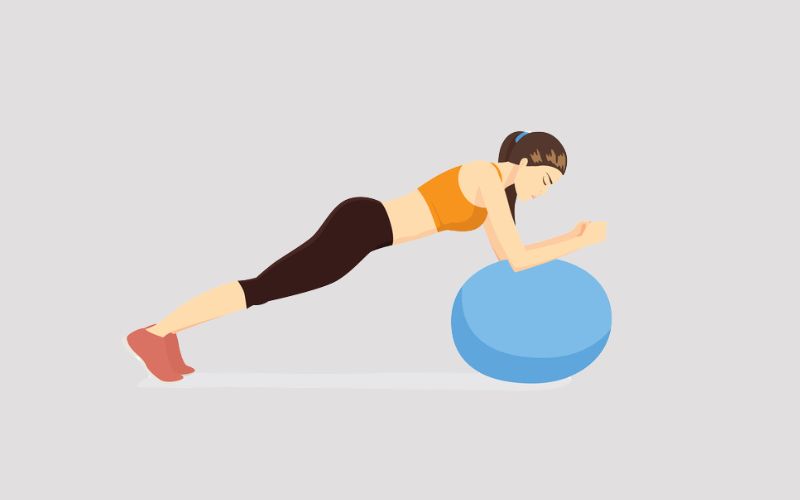
This exercise is perfect for people who can do planks for 1-2 minutes or longer and are getting bored with them.
With pot stirrers, the difficulty is ratcheted up and you can treat it more like a resistance training set. Typically, 3 sets of 20 reps (10 in each direction) can light the core on fire.
Some tips for doing Pot Stirrers like a champ:
- Move in tight, controlled circles. As you get stronger and more proficient with this exercise, the circles will grow, and the anti-rotation aspect of this exercise will kick into hyperdrive.
- Avoid spinning at a high rate of speed with your forearms on the Swiss ball. The goal is control, always!
- Switch directions mid-set for added difficulty.
8. Rollouts
Rollouts are a challenging core exercise for swimmers that is an anti-extension exercise.
Anti-extension is the body resisting the extension or arching of the lower back.
In other words, you are working your tail off to keep the back and spine neutral!
Using an ab roller wheel (or a Swiss ball or even TRX straps in a standing position, for beginners), from a kneeling position you “roll out,” extending your arms so that they extend in front of you.
Pause, keeping your chest from touching the ground, and slowly return to the starting position.
Roll-outs generate a ton of shoulder stability, core strength, and improved overall posture.
To get the most out of roll-outs:
- Start with a Swiss ball if you are new to this exercise—it’s a tough one!
- Like the other core exercises in this list, keep your spine in neutral and head in line.
- To maximize the contraction and anti-extension, pause at the point when fully extended.
- Breathe—this exercise is challenging, but don’t forget to breathe throughout, bracing the core.
Some truly impressive progressions can be done with this exercise, including standing roll-outs from a bear crawl position, ab roller walkouts, and so on.
Fair warning: This is a tough one for beginners that will leave your core sore for several days without progressing into using an ab roller.
Wrapping Things Up
Ultimately, adding core exercises to your swim training is an excellent way to get closer to hitting your peak potential in the water.
With more stability, power, and improved body position, your performance in the water will skyrocket both at swim practice and on race day.
Give these core exercises for swimmers a rip, and dive into faster and more efficient swimming.
Illustrations credits: Olivier Poirier-Leroy
ABOUT OLIVIER POIRIER-LEROY
Olivier Poirier-Leroy is a former national-level swimmer. He’s the publisher of YourSwimBook, a ten-month logbook for competitive swimmers.
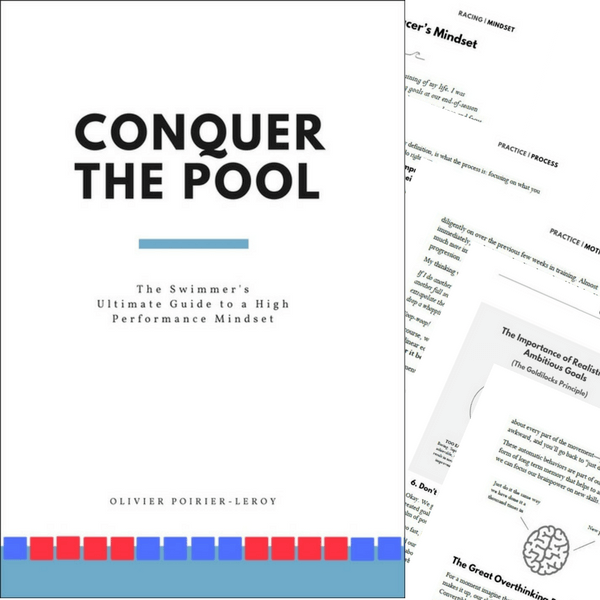 He’s also the author of the recently published mental training workbook for competitive swimmers, Conquer the Pool: The Swimmer’s Ultimate Guide to a High-Performance Mindset.
He’s also the author of the recently published mental training workbook for competitive swimmers, Conquer the Pool: The Swimmer’s Ultimate Guide to a High-Performance Mindset.
It combines sport psychology research, worksheets, anecdotes, and examples of Olympians past and present to give swimmers everything they need to conquer the mental side of the sport.
Ready to take your mindset to the next level?
Click here to learn more about Conquer the Pool.
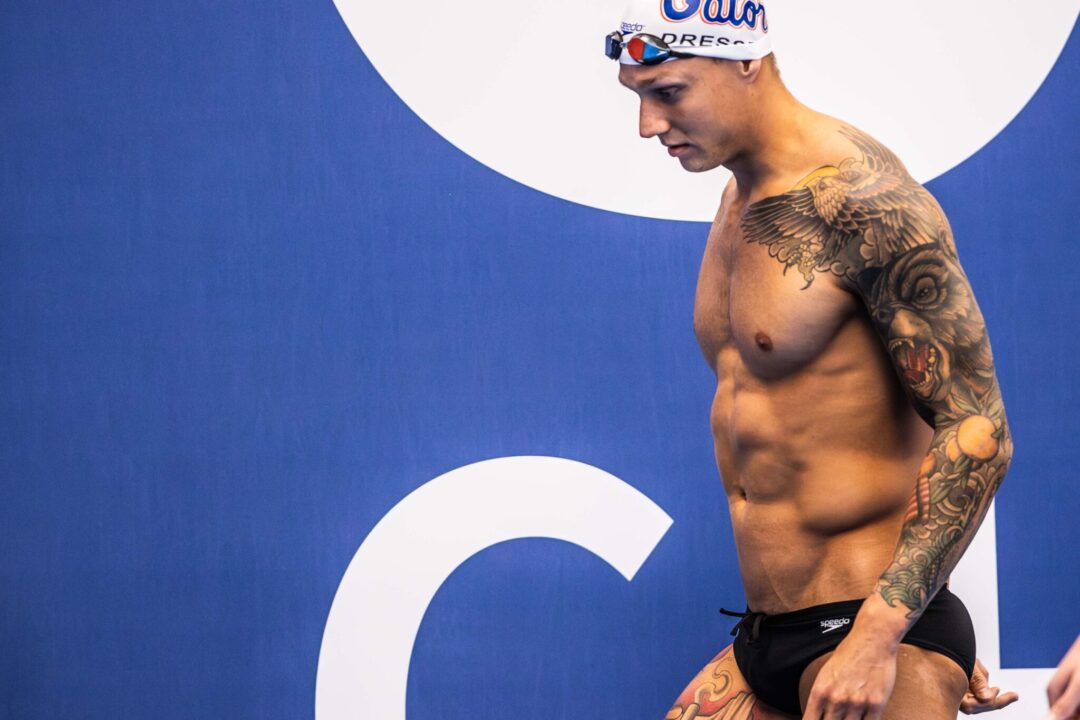
All great exercises. Two other exercises I recommend are stability ball pike and stability ball knee tuck. Great for butterfly and breaststroke.
Ab roller is a personal favorite of mine – it’s no joke.